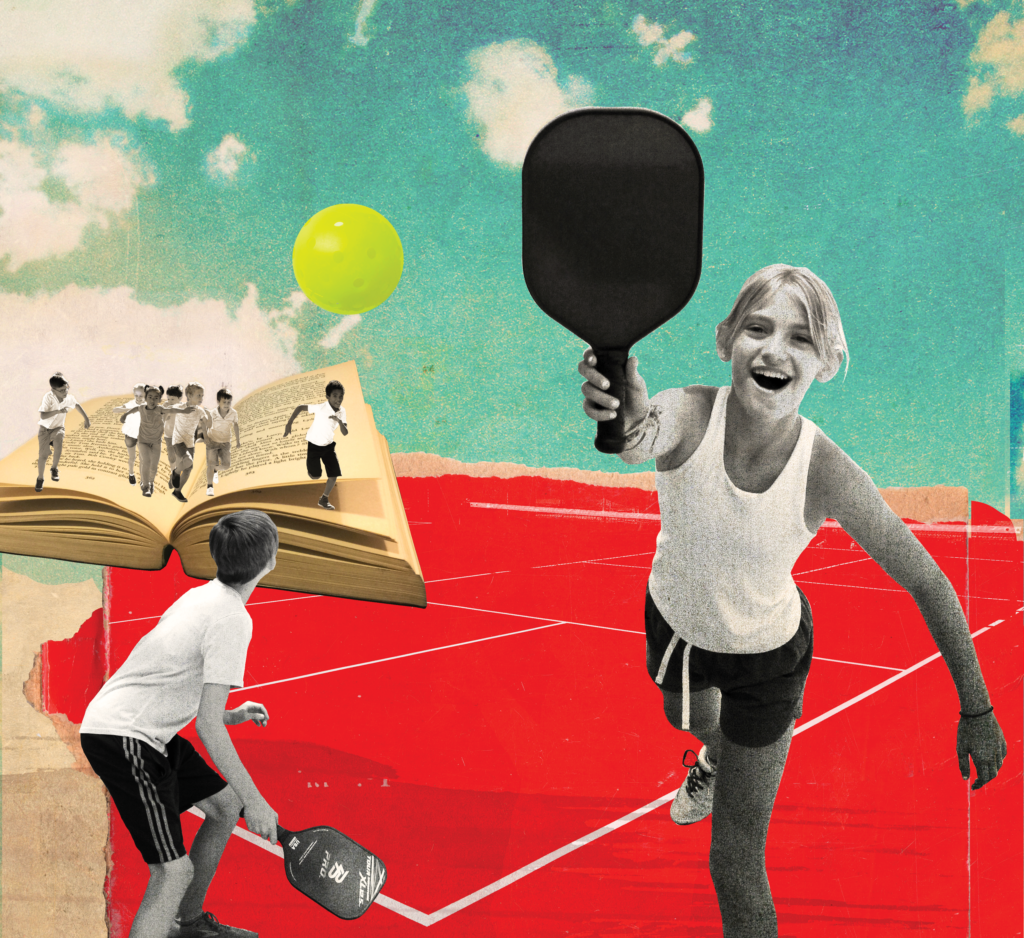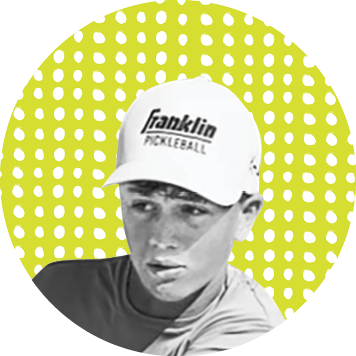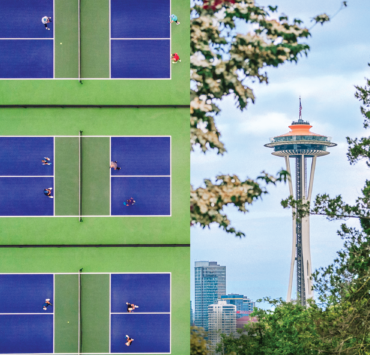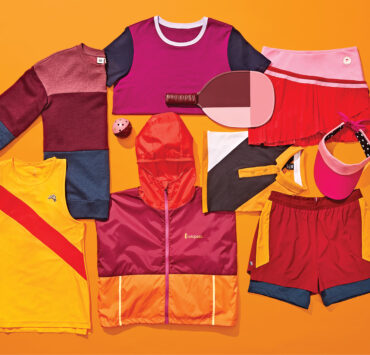WHEN LEO CHUN won the men’s 3.0 singles bracket last April at the PPA Red Rock Open in Utah, he was thrilled. Any winner would be excited, of course, but for Chun, the moment was extra special: He was only 10 years old. Chun is part of the newest generation to discover the joys of pickleball. Kids are increasingly gravitating to the sport, and like their parents and grandparents, they’re developing a real passion. The biggest increase in the pickleball player population is among the 6-to-17 age group, which rose by 50 percent from 2019 to 2021, according to the Sports & Fitness Industry Association.
“PICKLEBALL IS A FUN SPORT KIDS CAN LEARN QUICKLY AND GAIN CONFIDENCE FROM,” SAYS ROB BARNES.
This is good news for the future of pickleball, experts say. Not only are kids growing the sport, they are also helping to change the perception of the game. “That old stigma of pickleball not being cool is going away,” notes Rob Barnes, co-CEO of equipment maker Selkirk Sport.
FUN AND FRIENDSHIPS
It makes sense that kids are picking up paddles, Barnes says. They see young adult pros like Tyson McGuffin and Ben Johns and become fans. Plus, there are kid player role models like Chun and Anna Leigh Waters, who at age 15 is the top-ranked pickleball singles player in the world. Watching these phenoms motivates kids to play.
And once they try the game, kids want to keep at it, even if they’re not super athletic. “Pickleball is a fun sport they can learn quickly and gain confidence from,” Barnes explains. “It doesn’t have a high barrier to entry, skill-wise or cost-wise.”

Pickleball is very inclusive, adds Hope Tolley, managing director of recreational programs and services for USA Pickleball. “It offers an outlet for kids that’s different from what you find with many other sports,” she points out. “It gives kids another option to play.”
It’s also a safe and healthy way for kids to be active. Pickleball has a lower risk for injury than many youth sports, like football and soccer. And “it’s incredibly social,” says Maria Capone, club manager at Flemington Pickleball Club in New Jersey, which recently held weeklong summer camps for kids ages 8 to 15. “Kids build friendships when they play together.”
Even toddlers can get into the swing. Jeremiah Thomas, who owns Doylestown Pickleball in Pennsylvania, says he has campers as young as age 3 playing the game. The kids ask for pickleball more than traditional sports like T-ball, he notes. “You get more action in pickleball,” Thomas explains. “In T-ball, most of the time you’re watching some other kid hit. Kids want to move.”
LESSON PLANS
Schools have discovered pickleball as well. Grade schools across the country are incorporating the game into their physical education programs. Stephanie Lane, a pro player and phys ed teacher in Nashville, introduced her second-grade gym class to the sport. In Pennsylvania, several school districts have hired Thomas to help teachers
incorporate pickleball into gym classes. And high school teams are popping up in the West. Nicholas Redmon, a teacher at Ridgeline High School in Millville, Utah, has built a pickleball team of 16 girls and 16 boys that has become good enough to play against the Utah State University pickleball club. Other high schools in the state are forming squads as well. “Having a Utah-wide tournament is our eventual goal,” Redmon says.

In fact, Utah is a hotbed for pickleball play in schools. The Amateur Athletic Union (AAU)
is currently striving to get pickleball into more schools in the state by helping them acquire low-cost equipment, says Mike Nielsen, the AAU’s executive director of pickleball.
USA Pickleball is actively working to get more kids involved in the sport as well, Tolley says. “Kids are a major focus for us,” she says. “We want to give them exposure to pickleball through schools, youth groups, boys’ and girls’ clubs—you name it.” One way the organization is doing that is by offering numerous resources on their website (usapickleball.org), such as free programs and guides for educators and youth organizers.
Colleges are also on the ball. An increasing number of them, including Robert Morris University and Butler University, offer intramural play. There’s even a website to help expand the effort (uscollegiatepickleball.com), and founder Gary Stocker thinks universities will eventually provide pickleball scholarships.
FAMILY COMPETITION
For their part, parents couldn’t be happier about their kids’ new sport of choice. Many of them encourage pickleball because, unlike with most other kids’ sports, Mom and Dad don’t have to stay on the sidelines. Families play together, and some get good enough to compete. Parent-child doubles tournament teams are common.

The only problem? Kids can get good enough to outplay their parents. Just ask Nashville teacher Lane, a medalist in the sport, who started teaming up with daughter LeEllen when LeEllen was 12. At first it was all good fun for the pair, but now mother and daughter play separately. “We gave up the partnership to keep the relationship,” Lane jokes. “LeEllen can beat me now. I knew the day would come.”

LEO CHUN
When he started playing pickleball in 2020 at age 8, Chun wasn’t just the youngest competitor at the October 2020 PPA tournament in Las Vegas; he became the youngest PPA medal winner ever, taking a bronze in the 14-and-under category. Since then, the former tennis trainee has won multiple junior and adult medals, and now, at age 10, he has topped two of the men’s brackets. Chun counts among his highlights beating Olympian Michael Phelps in a pickleball exhibition last June. Born in South Korea and raised in Utah, Chun has dual citizenship and hopes to someday represent South Korea in the Olympics.

JORJA JOHNSON
At 16, Johnson is one of the top 10 women pros. Growing up with tough training partners helped her get there. The Johnson family started playing in 2018, after they moved from Kansas to Florida, then honed their skills together during the pandemic, and soon began to dominate the sport. Mom Julie has reached number one in senior pro women’s singles, and older brother (and Johnson’s occasional doubles partner) JW is at the top of the men’s list. Showing off smart shot selection, Johnson won her first pro gold last January playing women’s singles.

HAYDEN PATRIQUIN
Patriquin’s first regular opponent when he took up the sport at age 13 was his grandfather. But after the California native won at a local tournnament in 2020, it was a whole new game. Now 17, Patriquin has been pro since the start of 2022, winning with his speed and quick reflexes. “I’m able to move around fast because I’m not very tall,” he says. Patriquin is glad to see more kids coming to pickleball from tennis. “That’s gonna grow the sport for sure,” he says.



